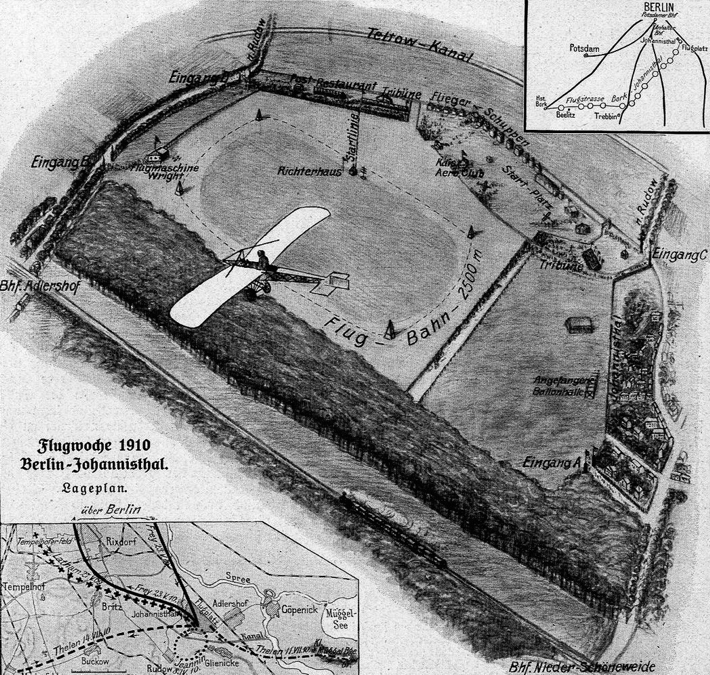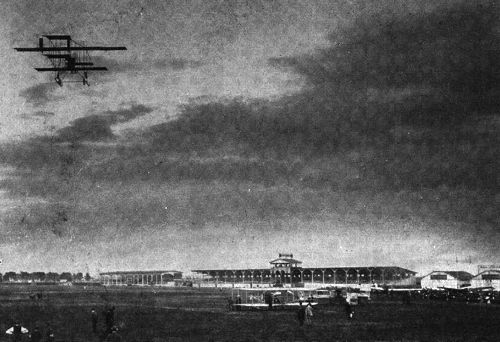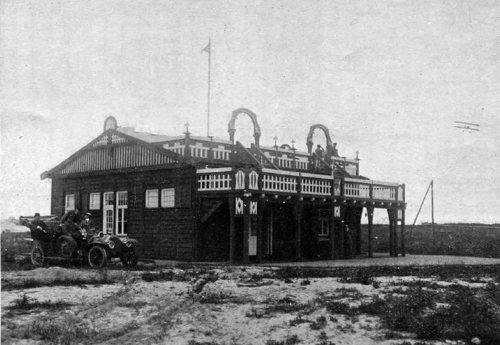Nationale Flugwoche
Berlin, Germany, August 7th - 13th, 1910
Berlin, Germany, August 7th - 13th, 1910
The Johannisthal airfield

A seven kilometre wooden fence was built around the field. A trapezoidal course of 2.5 kilometres was laid out. Twelve hangars were built, together with grandstands, several restaurants and canteens and a post office. It was claimed that all the grandstands and other public facilities were built in 19 days immediately before the opening of the field.
The installations were improved and enlarged already the year after. Several airplane companies, for example Albatros, Rumpler and LVG, and flying schools made the Johannisthal airfield its home. During WW1 it was used by both the marine and the army. It continued to operate after WW1, but gradually lost importance as a civil airfield after the Tempelhof field was opened in 1923. It was then used by the Deutsche Versuchsanstalt für Luftfahrt and by the military.
In April 1945 the airfield was taken over by Soviet forces and ended up in the eastern sector of Berlin. After WW2 it was briefly used, mainly by Soviet transport planes, but flying activities declined quickly. The airfield was officially closed after a final airshow in 1995.
Today the area is being developed, mainly for industrial and academical purposes, but part of the airfield will be preserved as a park.

A drawing showing the general layout of the race course
and the airfield installations. Development of the
previously forested northwestern parts of the field (on
the lower right side of the map, north is at six
o'clock) had started, but the 1909 2.5 km course
was still used. (1)
Click here for a high-resolution version!
here for a high-resolution version!
Click
 here for a high-resolution version!
here for a high-resolution version!

Emil Jeannin flying above planes waiting for their turn
at the Startplatz. The main grandstand at the end of
the line of hangars can be seen in the background. (2)

The new clubhouse of the Kaiserliche Aero-Club. (2)

The hangars along the "Alte Startplatz" as
they looked in 1909. (3)
Too see more details, open the map in Google Maps by
clicking the "full screen" symbol at the top
right of the menu bar!
 Back to the top of the page
Back to the top of the page
